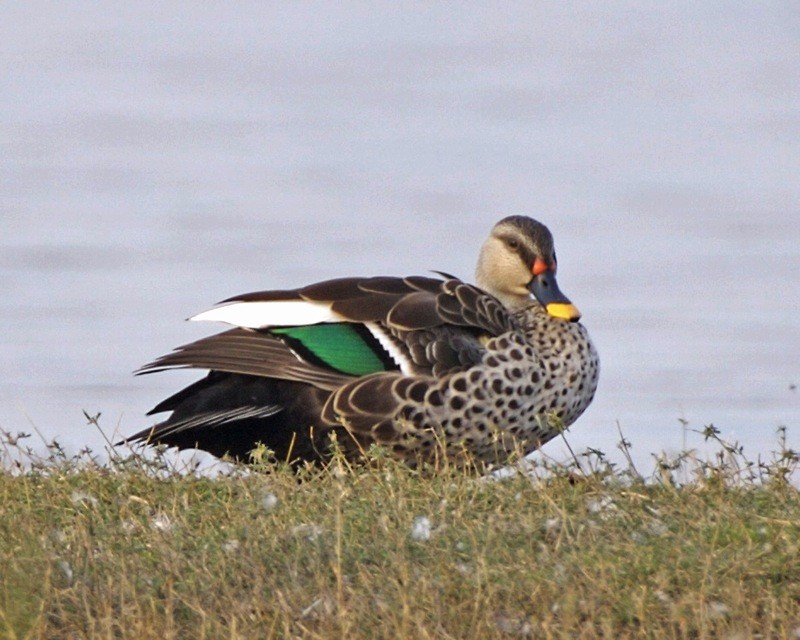Indian Spot-billed Duck
A species of Anas Scientific name : Anas poecilorhyncha Genus : Anas
Indian Spot-billed Duck, A species of Anas
Botanical name: Anas poecilorhyncha
Genus: Anas
Content
Description General Info
 Photo By Lip Kee , used under CC-BY-SA-2.0 /Cropped and compressed from original
Photo By Lip Kee , used under CC-BY-SA-2.0 /Cropped and compressed from original Description
This duck is around the same size as a mallard and has a scaly patterned body with a green speculum bordered by white. At rest the white stripe stands out and the long neck and the bill with yellow tip and orange red spots at the base are distinctive in the nominate subspecies. The red spots at the base of the bills are absent in haringtoni. It measures 55–63 cm (22–25 in) in length and 83–95 cm (33–37 in) across the wings, with a body mass of 790–1,500 g (1.74–3.31 lb). These are mainly grey ducks with a paler head and neck and a black bill tipped bright yellow. The wings are whitish with black flight feathers below, and from above show a white-bordered green The male has a red spot on the base of the bill, which is absent or inconspicuous in the smaller but otherwise similar female. The male does not have an eclipse plumage. The legs and feet are bright orange to coral red. Juveniles are browner and duller than adults. The eastern spot-billed duck is darker and browner; its body plumage is more similar to the Pacific black duck. It lacks the red bill spot, and has a blue speculum. Both males and females undergo a complete post-breeding moult, dropping all their wing feathers simultaneously. 
Size
63 cm
Nest Placement
Ground
Feeding Habits
Indian Spot-billed Duck mostly consumes vegetation, including seeds and parts of grasses, augmented with aquatic insects, larvae, worms, and snails. It forages by dabbling and upending in water, also grubbing in marshes, sometimes at night. Often seen feeding in small flocks.
Habitat
Indian Spot-billed Duck typically inhabits a range of wetlands, including both inland freshwater environments and coastal settings with tidal or brackish water. These areas are often open and low-lying, featuring shallow waters conducive to the growth of emergent vegetation, which is important for their foraging and nesting activities.
Dite type
Omnivorous
General Info
Feeding Habits
Bird food type
Distribution Area
This duck is a resident throughout Pakistan and India in freshwater wetlands. They tend to avoid very large patches of open water and prefer medium-sized wetlands with vegetation cover. Some individuals may however migrate as a bird ringed at Bharatpur in Rajasthan on 5 December 1969 was recovered near Novosibirsk in August 1970. It is quite gregarious outside the breeding season and forms small flocks. The northernmost populations have expanded their range northwards by more than 500 km since the early 20th century, possibly in reaction to global warming. 
Species Status
Not globally threatened.